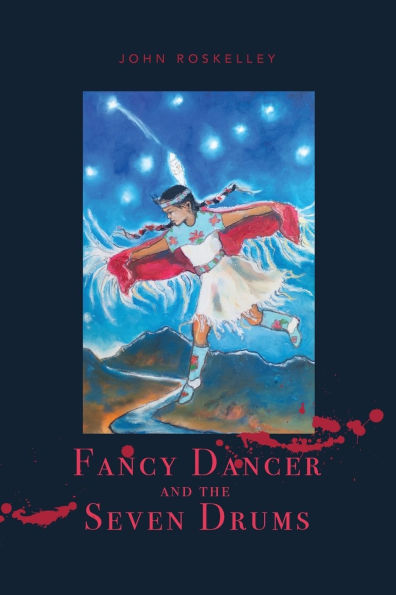Read an Excerpt
“Moses! Ben Moses!”
Moses swiveled his head toward the employment office and saw the head of the employment staff standing on the office steps looking over the hundreds of men waiting for work. Moses raised his arm and walked
alongside the line of men, some of whom growled derogatory insults or sent a gob of spittle wetting the dust in his path.
“Is this you?” he said, showing Moses his employment form and signature.
Moses nodded.
“Come with me.”
Moses’ first job on the dam in 1935 was applying Ca5, a caustic, black coal tar rust inhibitor, to exposed steel for fifty cents an hour. There was not a more filthy, disgusting job on the dam, and it was, according to one
supervisor, “good work for Indians.”
Fresh from the bucket on a warm day, the gooey, pungent prohibitor stuck to steel, and Moses’ clothes and boots, like room-temperature honey. When the glue-like Ca5 dried, it hardened into a crust and by the
end of the workweek, his overalls stood up next to his bedroll like a suit of armor. Work clothes were so unusable after five days on the job, Mason Walsh-Atkinson and Kier Company, known as MWAK, the consortium of contractors hired by the government to build the dam, provided Moses and the other men who worked applying the tar-like substance with fresh overalls, shirts, and gloves the first of every workweek. But it would take half an hour every night with a sharp knife to chip the tar off his boot leather and remove it from the soles.
An arctic blast swept in from Canada in early November the next year and turned the dam site into a steel-and-cement popsicle. Frost clung to steel, to cement; even the trade’s work shack looked like an igloo. While coating steel with the heated sticky goo on the west side foundation’s 39A block, Moses saw Ron Nelson, an ironworker, slip on a patch of ice and fall thirty feet from the edge of the foundation wall and into the water of the wide forebay above the dam. Nelson, heavily loaded by a pair of leather work boots, a wool coat, and an ironworker’s tool belt holding two spud wrenches and a bag of bull pins, disappeared into the dark roiling water. But to Moses’ surprise, he resurfaced twenty-five seconds later after hastily removing his tool belt while underwater and rising along the concrete wall. His “trick” vest, a MWAK-issued life preserver, was keeping him afloat. Once on the surface, though, the turbulence of over fifty thousand cubic feet per second hitting the west foundation upriver wall grabbed him and swept him sideways toward the nearest diversion channel, one of five narrow openings where the entire Columbia River was forced to squeeze past the unfinished dam. Nelson had forty feet of icy concrete wall and less than twenty seconds to live before he would be swept into the deadly rapids and powerful whirlpools at the base of the dam.
As quick as a bobcat pouncing on a rabbit, Moses dashed the twenty feet to the edge of the block, grabbed his attached safety line, looped the rope over a thick rod of rebar steel sticking above the foundation concrete, and hand-lined down the double-strand to within a few feet above the water. With two quick wraps of the tails of the two ropes around his right leg to lock him into position, he freed one hand to grab Nelson by the trick vest. By that time, the ironworker was ten feet from being sucked into the diversion channel by the powerful current. More men had gathered on top of the foundation, calling for the bottom-dumping concrete bucket.
“Grab my belt!” Moses yelled as he reached down to help the man.
Nelson reached up and grabbed the belt, but couldn’t hold on with frozen hands. He wrapped an arm around Moses’ boot and hung on, while Moses worked to secure him.
A cantilever high crane operator, sitting in his cab 240 feet above the water, saw the commotion and knew instinctively what had happened. He broke away from pouring concrete and moved the crane a short distance along the trestle tracks to place the 115-foot horizontal boom in line with his “eyes,” a bucket spotter now standing on the edge of the foundation above Nelson and Moses.
With the accuracy of a diamond cutter, the crane operator, aided by hand instructions from his spotter, lowered the four-yard bucket—which could hold eight tons of concrete—to within inches of the two struggling men and slightly above the roiling turbulence below. Moses pulled Nelson up between his legs and squeezed, then wrapped a loop of the rope under the man’s arms to keep him from being swept away. When the bucket was close, he tied a bowline to the bottom ring of the car-sized bucket, and then both men grabbed the steel ring with grips only the threat of sure death could muster. The spotter signaled to the operator to raise the bucket. The bucket rose and lifted the exhausted men to within five feet above the level of the foundation, and then the operator pulled it toward a growing crowd of construction workers. A slew of hands grabbed Moses and Nelson, untied them from the bucket, and steadied them on their feet. The bucket then ascended like a spirit and, as if nothing had happened, the crane operator and spotter returned to pouring concrete.
All right, this isn’t a fucking picnic,” Tim Anderson, the crew boss, said to the crowd of construction workers. “Get back to work. We have a dam to build.”



